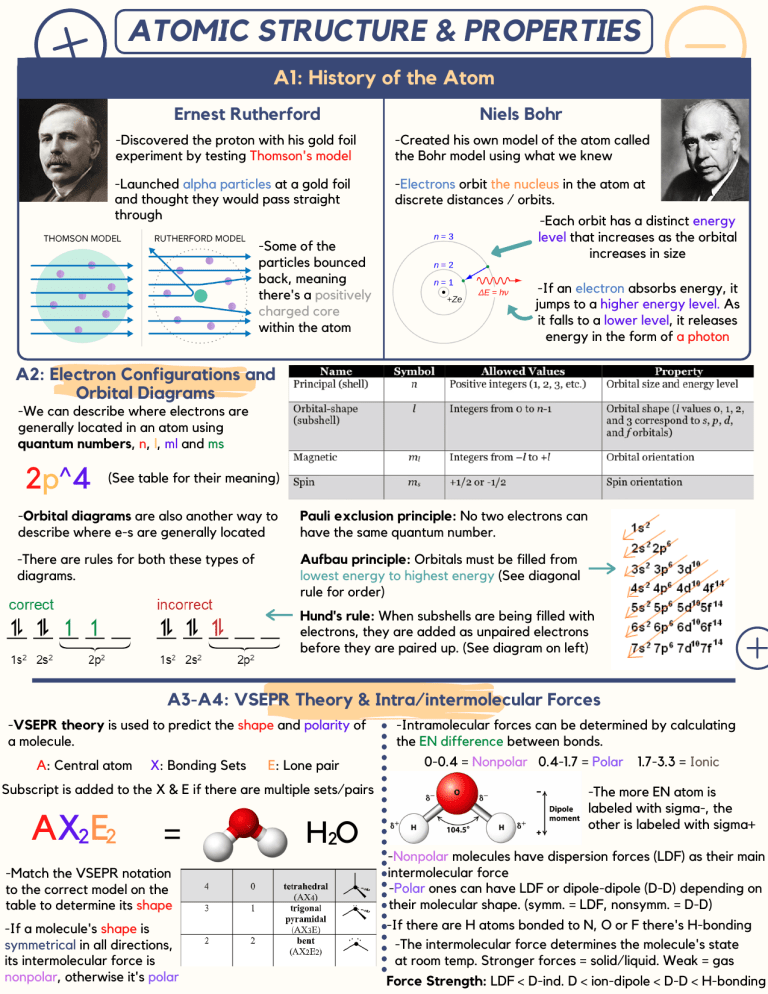
ATOMIC STRUCTURE & PROPERTIES A1: History of the Atom Ernest Rutherford Niels Bohr -Discovered the proton with his gold foil experiment by testing Thomson's model -Created his own model of the atom called the Bohr model using what we knew -Launched alpha particles at a gold foil and thought they would pass straight through -Electrons orbit the nucleus in the atom at discrete distances / orbits. -Some of the particles bounced back, meaning there's a positively charged core within the atom -Each orbit has a distinct energy level that increases as the orbital increases in size -If an electron absorbs energy, it jumps to a higher energy level. As it falls to a lower level, it releases energy in the form of a photon A2: Electron Configurations and Orbital Diagrams -We can describe where electrons are generally located in an atom using quantum numbers, n, l, ml and ms 2p^4 (See table for their meaning) -Orbital diagrams are also another way to describe where e-s are generally located Pauli exclusion principle: No two electrons can have the same quantum number. -There are rules for both these types of diagrams. Aufbau principle: Orbitals must be filled from lowest energy to highest energy (See diagonal rule for order) Hund's rule: When subshells are being filled with electrons, they are added as unpaired electrons before they are paired up. (See diagram on left) A3-A4: VSEPR Theory & Intra/intermolecular Forces -VSEPR theory is used to predict the shape and polarity of a molecule. A: Central atom X: Bonding Sets E: Lone pair Subscript is added to the X & E if there are multiple sets/pairs AX2E2 = -Match the VSEPR notation to the correct model on the table to determine its shape -If a molecule's shape is symmetrical in all directions, its intermolecular force is nonpolar, otherwise it's polar H2O -Intramolecular forces can be determined by calculating the EN difference between bonds. 0-0.4 = Nonpolar 0.4-1.7 = Polar 1.7-3.3 = Ionic -The more EN atom is labeled with sigma-, the other is labeled with sigma+ -Nonpolar molecules have dispersion forces (LDF) as their main intermolecular force -Polar ones can have LDF or dipole-dipole (D-D) depending on their molecular shape. (symm. = LDF, nonsymm. = D-D) -If there are H atoms bonded to N, O or F there's H-bonding -The intermolecular force determines the molecule's state at room temp. Stronger forces = solid/liquid. Weak = gas Force Strength: LDF < D-ind. D < ion-dipole < D-D < H-bonding



